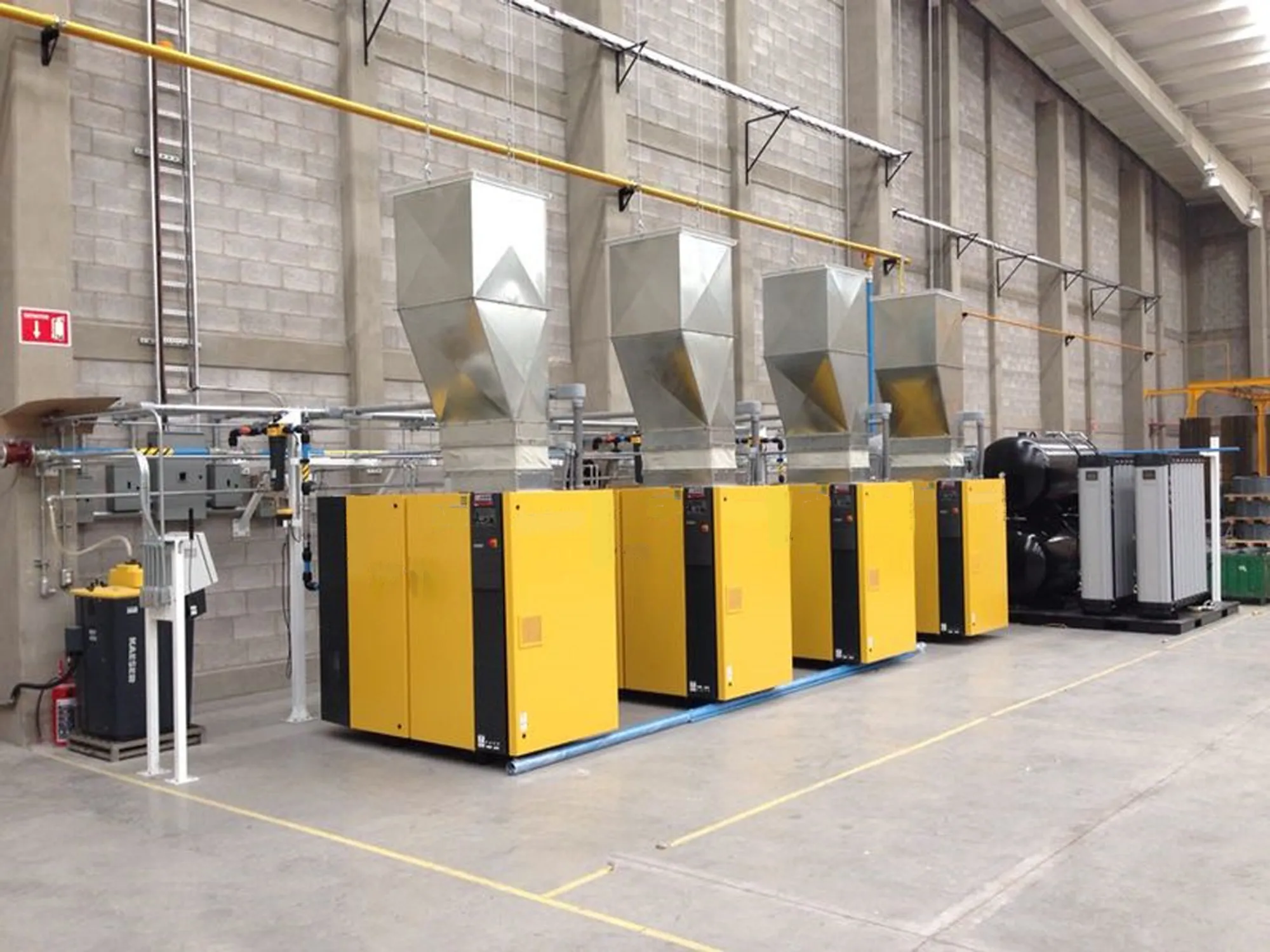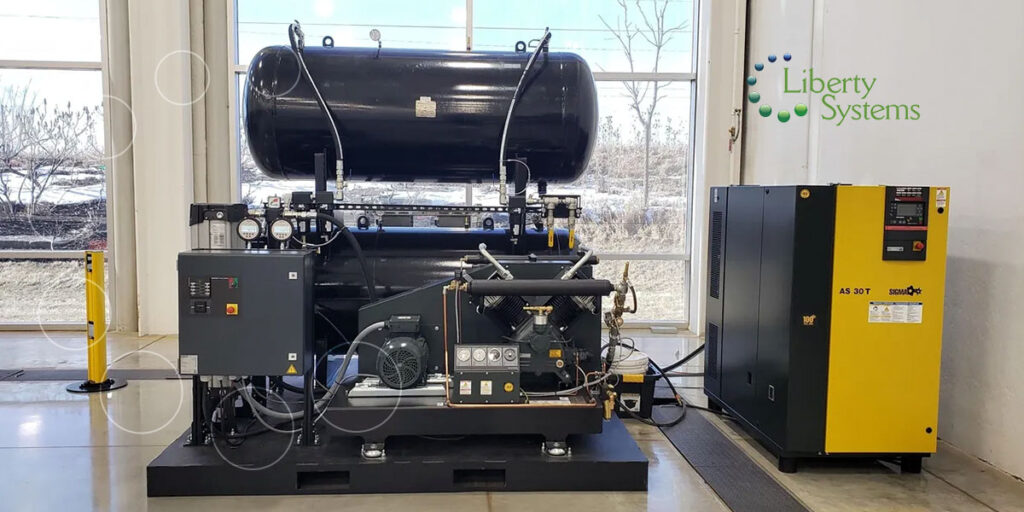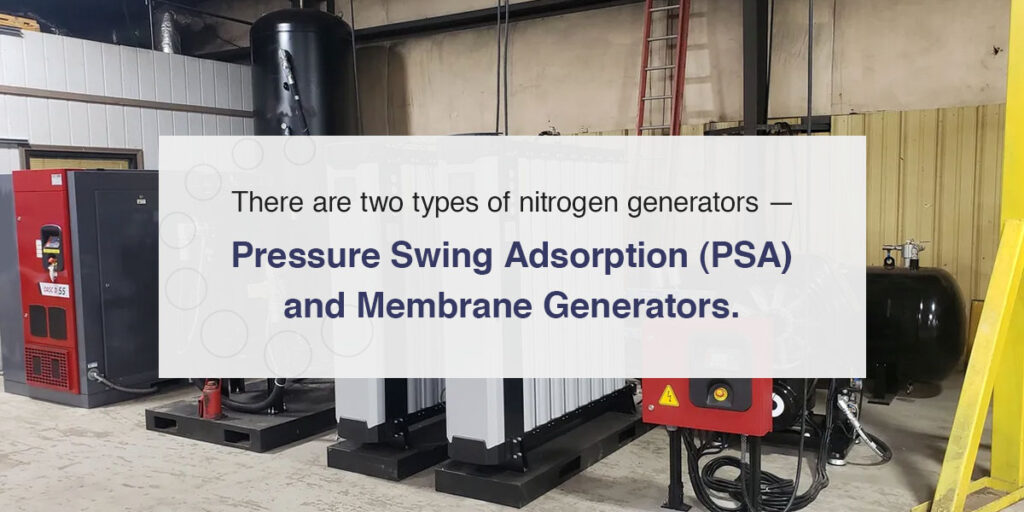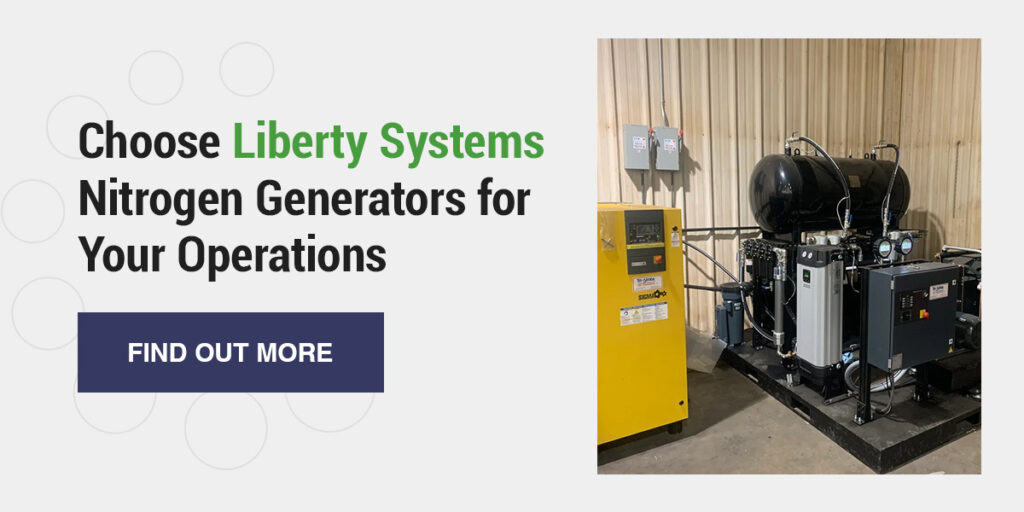How Does a Nitrogen Generator Work?


How a Nitrogen Generator Works
Nitrogen is a colorless, odorless, tasteless gas that’s essential for life and industry operations. Fortunately, the Earth has an abundant supply of it, as around 78% of the atmosphere is nitrogen.
Just as all living organisms depend on nitrogen for survival, many industries rely on this gas to operate. Businesses can source nitrogen in three ways — leasing a nitrogen tank, purchasing high-pressure bottles or generating the gas onsite.
The majority of businesses favor the latter option — which involves using a nitrogen generator — for its cost-efficiency, convenience and reliability. If you’re interested in learning more about what a nitrogen generator is and how you can use one to support your operational needs, we’re here to help with this guide.
What Is a Nitrogen Generator? Use and Benefits
A nitrogen generator produces nitrogen by separating nitrogen molecules from compressed air to create pure nitrogen. This technology benefits businesses across industries, such as food and beverage, laser cutting and pharmaceuticals.
Nitrogen generators need compressed air, so the first step of using a nitrogen generator is connecting the generator to an air compressor. Once the pressured air enters the system, the generator will separate the nitrogen molecules from elements such as oxygen, water, carbon dioxide and argon. The result of this process is pure nitrogen that’s suitable for a range of industrial applications.
Nitrogen generators allow businesses to produce nitrogen on demand. This method reduces potential downtime, as there’s no need to wait for a gas bottle delivery to continue operations. Similarly, if your production rate has decreased, you’re not bound to a contract with a nitrogen supplier.
In addition to tailoring the amount of nitrogen to your needs, you can specify the purity, allowing you to comply with industry regulations and ensure quality products.

The Different Types of Nitrogen Generators
There are two types of nitrogen generators — pressure swing adsorption (PSA) and membrane generators. Both machines are effective in generating nitrogen onsite, yet they produce different nitrogen qualities. Comparing these generator types can help you make a more informed decision about which one is best for your applications.
Here’s how these technologies compare:
Pressure Swing Adsorption Generators
PSA generators have two absorption containers filled with a carbon molecular sieve. When the machine is in use, it extracts air from the environment and pushes it into the absorption containers. The specialized sieve then uses activated carbon to absorb oxygen and carbon dioxide molecules. Dried nitrogen remains, which moves into the product tank for future use.
Businesses in the food and beverage industry, such as breweries and wineries, require the highest quality of nitrogen. PSA generators produce a nitrogen purity of 99.999%, so they’re a popular choice for these businesses.
Membrane Generators
A hollow fiber membrane is a key component of this technology. When you connect the machine to an air compressor, air is forced through the membrane tube. Oxygen molecules are slightly smaller than nitrogen molecules, so they’re quickly diffused by the hollow fibers. The larger nitrogen molecules remain in the membrane before filtering through a port.
Membrane generators are easier to use and maintain than PSA systems, making them more cost-effective. However, the nitrogen quality is slightly lower at 99.9% or less. Still, since this purity level is sufficient for many applications, membrane generators are top choices.
No matter if you choose a PSA or membrane generator, you should work with a professional supplier and installation team. Typically, your supplier will walk you through how to operate your nitrogen generator so you can ensure it functions at its best. Regular maintenance is also crucial to ensure the longevity of your machine. Regular cleaning and filter replacements need to be part of your maintenance schedule to gain the maximum return on your investment.
How Much Nitrogen Can a Nitrogen Generator Produce?
Despite its compact design, membrane nitrogen generators produce slightly more gas per hour compared to PSA generators. While the exact amount of nitrogen will differ according to the manufacturer, here are general guidelines for both:
- PSA nitrogen generators produce approximately 0.50-10,000.00 cubic meters of nitrogen per hour.
- Membrane nitrogen generators produce roughly 0.14-10,000.00 cubic meters of nitrogen per hour.
When choosing between a PSA and membrane generator, consider the nature of your applications. If you require a high capacity of nitrogen, generators with membrane technology are a good option. PSA generators are a more appropriate choice for applications that require high-purity nitrogen.
Ultimately, you should always consult the supplier of the model you want to invest in to see if it can support your needs.
Applications of Nitrogen Generators in Different Industries
From flushing wine bottles during the bottling stage to preventing fires on oil rigs, nitrogen has a variety of uses across industries. Here are some of the most common industries that rely on nitrogen generators:
- Laser cutting: Lasers require nitrogen to cut materials such as aluminum, carbon steel and stainless steel.
- Heat treating: Using nitrogen in the heat treating process reduces the likelihood of discoloration while maintaining product quality.
- Breweries: As nitrogen is tasteless, it’s ideal for cleaning beer tanks and kegs between uses, ensuring the next batch of beer stays fresh.
- Oil and gas: Nitrogen has many uses for oil and gas businesses, including reservoir pressure maintenance, fire prevention, and injection and pressure testing.
- 3D printing: Nitrogen is used to clean the build chamber in a 3D printer, ensuring optimal quality and safety during 3D printing.
- Food packaging: Food is kept fresh for longer by using nitrogen to displace the oxygen.

Choose Liberty Systems Nitrogen Generators for Your Operations
Nitrogen generators offer a wealth of benefits compared to leasing nitrogen tanks or purchasing nitrogen bottles. Some of the most notable advantages are lower costs, no wait time on deliveries, exceptional purity and increased safety.
Liberty Systems prides itself on supplying reliable, durable nitrogen generators with an exceptional three-year warranty. By discussing your nitrogen quantity and quality needs, we can help you select the right nitrogen generator for your applications.
Complete our online form today to learn more about our systems or schedule an appointment.
